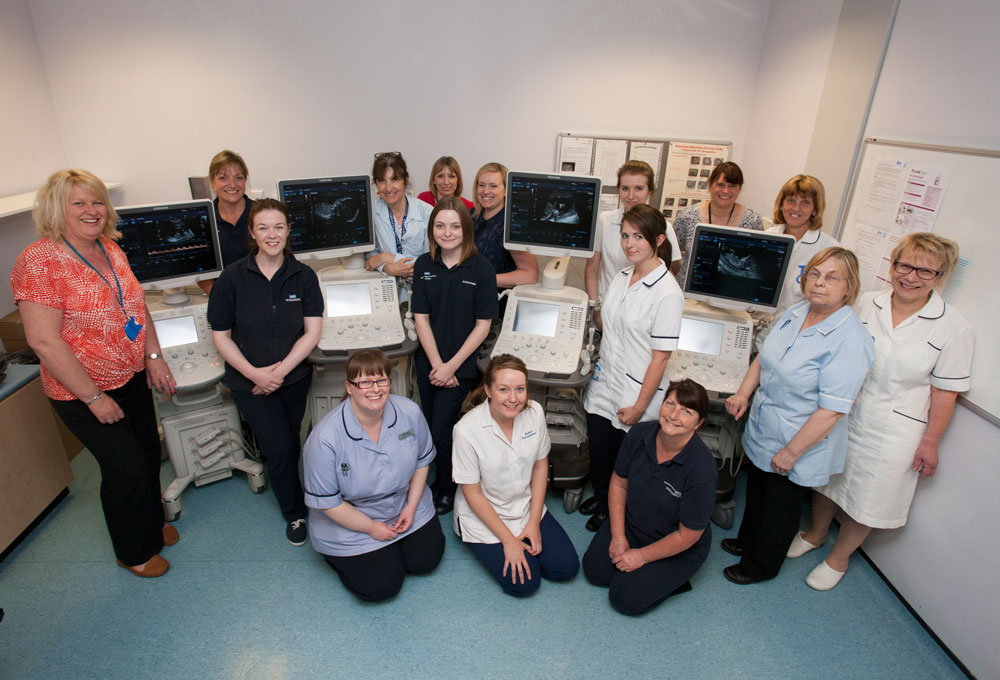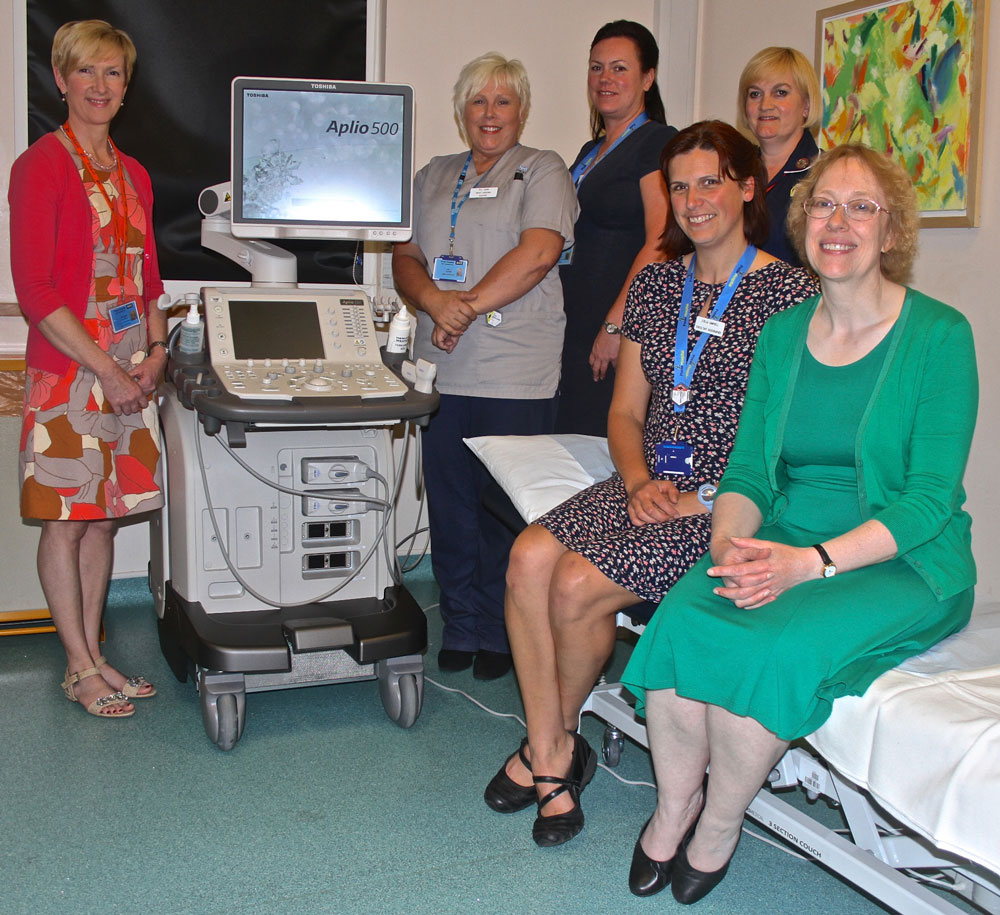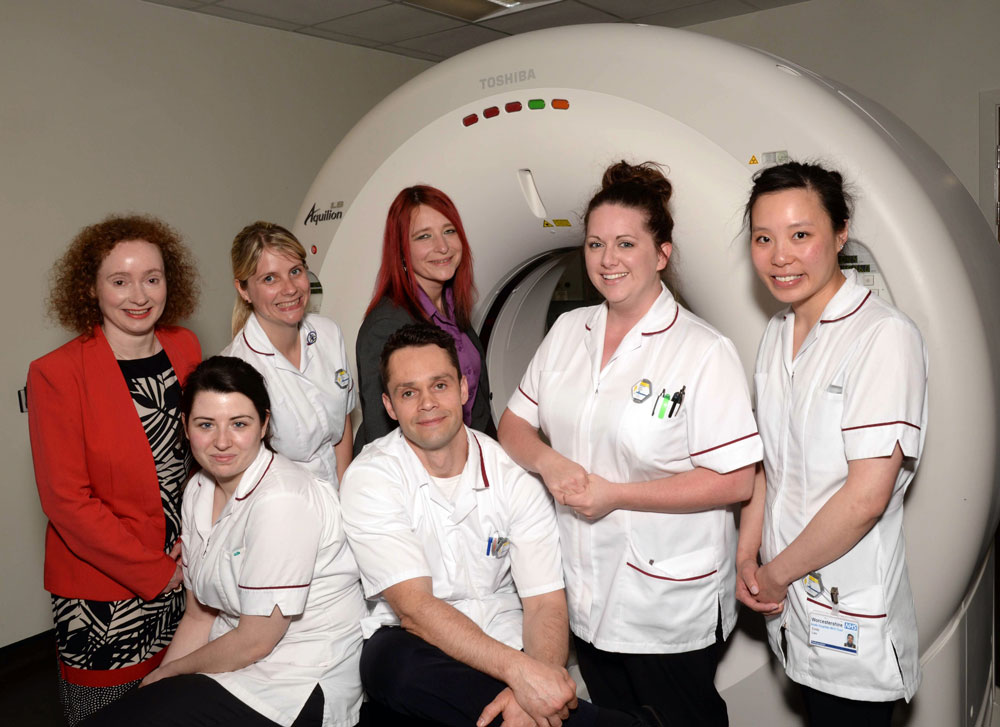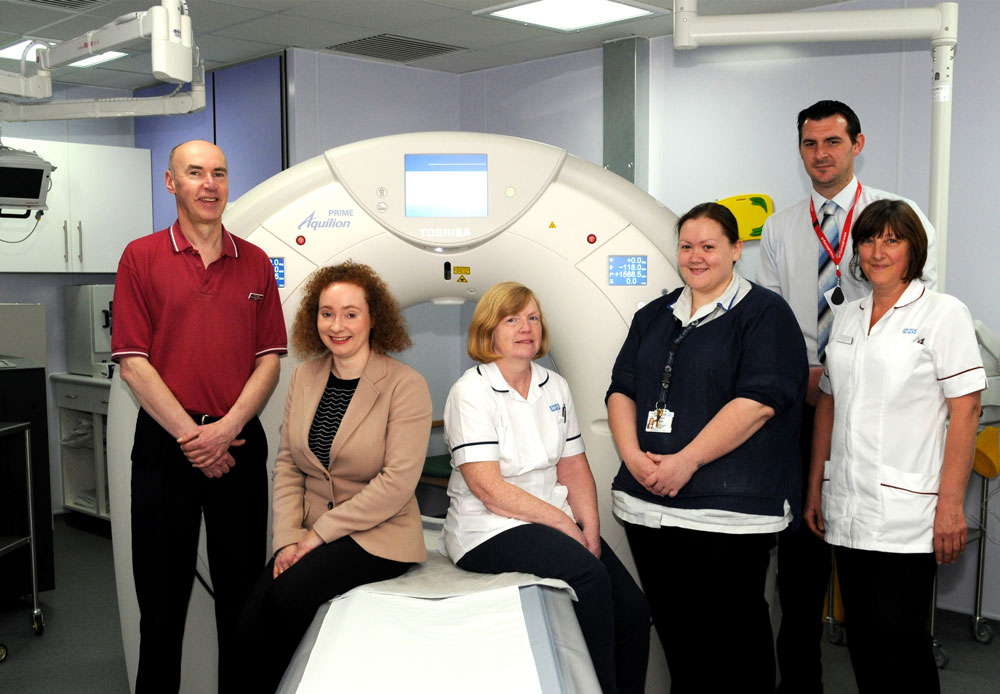Royal Surrey County Hospital recently acquired a Canon Ultimax-i X-ray fluoroscopy system. Elisabeth Main, GI Advanced Practitioner, says, “We find the Canon Ultimax a very easy machine to use and particularly appreciate the low table height which facilitates the transfer of immobile and wheelchair patients. In addition, our patients all love the ceiling installation with its creative lighting. It is proving to be a much more relaxing experience for them.” Elisabeth continues, “We had an old Canon Ultimax and as well as its excellent image quality and the low dose, we opted for the Ultimax again because of the excellent service support we always receive from Canon.”
As a multi-purpose RF system the Ultimax is capable of a wide variety of exams including hystero-salpingograms, and is also used as back-up for interventional procedures. In addition to its excellent image quality and low dose, the installation of a Relax & View ceiling, as part of the Canon turnkey project and normally only seen in high-end modalities such as CT, is a particular improvement for HSG patients.
With the Ultimax-i the Royal Surrey County Hospital has acquired a versatile, flexible system, designed to satisfy a wide range of clinical imaging and interventional needs. In fact the Ultimax offers ‘three systems in one’, with angiography, radiography/fluoroscopy and direct radiography all in the one unit. The C-arm system with a digital X-ray table is provided with remote and local operation, with rapid table and C-arm motion allowing virtually any position and projection whilst capturing high-resolution clinical images. It covers all gastrointestinal studies, interventional radiology and angiographic procedures without compromise.
Designed with patient comfort and safety in mind, following the initial positioning, the Ultimax can assume any orientation required, with anti-collision technology in place to protect the patient at all times. It comes with a minimum table to floor height of 50 cm, providing greater comfort for patients with poor mobility. In addition, a comprehensive dose reduction programme, consisting of various hard- and software features, ensures the optimum result at lowest dose.
Anatomical coverage from head to toe is in excess of two metres, taking into account the scanning range of 163 cm and the dimensions of the 43 x 43 cm detector. The 90°/90° table-tilt allows added flexibility for multi-purpose techniques such as gastrointestinal studies, urological exams, etc, and C-arm and digital acquisition controls permit bolus chasing DSA for extremity imaging. A triple-focus X-ray rube that facilities imaging of finely detailed
anatomy and a fluoro digital compensation filter allows real-time image enhancement. In addition, multiple images can be linked as a single image so that the spine and lower extremities can be displayed in a single view.
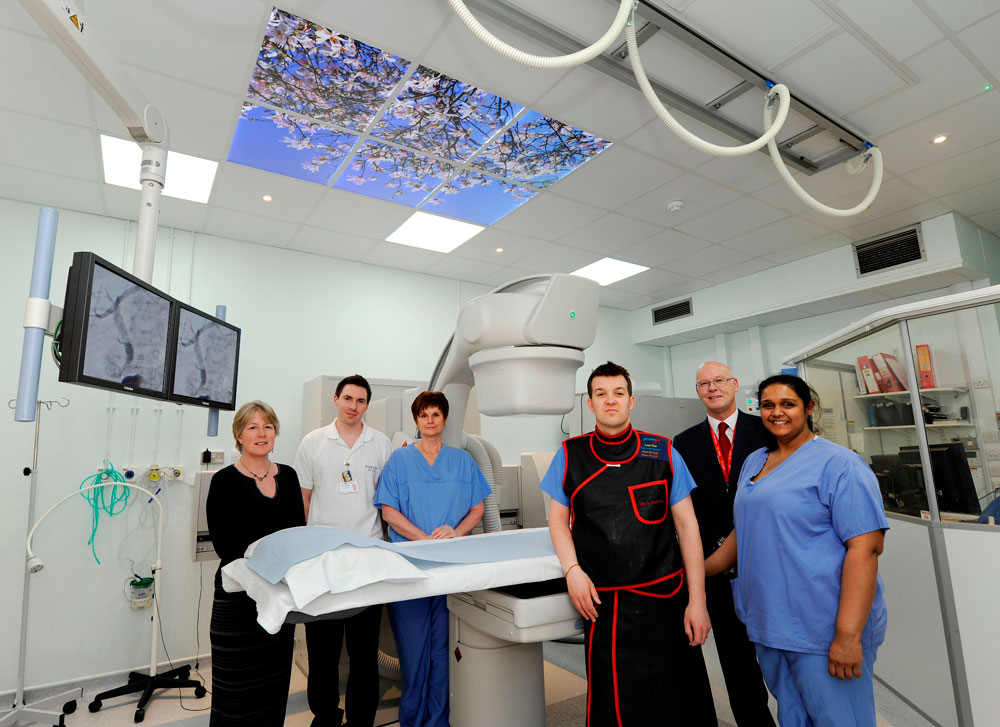
Shown here, left to right, Wendy Dengate, Radiology Directorate Services Manager; Christopher Moore, Radiographer; Jann Paton, Interventional Lead Radiographer; Dr. Alex Horton, Consultant Radiologist; Mark Foxall, Account Executive CT/XR/MR, Canon Medical Systems and Anita Sankar, Radiographer
Canon Medical Systems has a carbon-zero project in place. We have calculated the carbon footprint for each of our products to include manufacturing, shipping, delivery and average hospital energy useful for the standard lifetime of the equipment as follows: X-ray equates to 13 stoves and 50,781 litres of water


